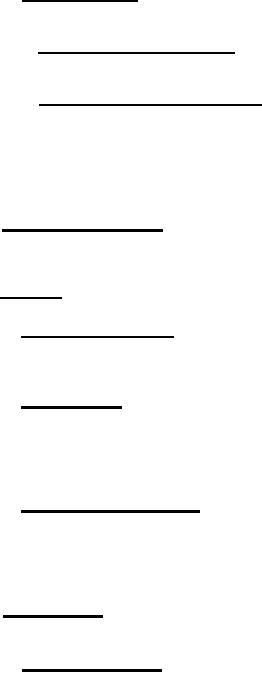 |
|||
|
|
|||
| ||||||||||
|
|  MIL-T-6396E
3.6.2 Screw threads. Screw threads other than those used in fittings shall
meet the requirements specified herein.
3.6.2.1 Straight screw threads. All screw threads shall conform to MIL-S-7742
or MIL-S-8879. The use of pipe threads is prohibited.
3.6.2.2 Locking of threaded parts. All threaded parts shall be positively
locked by safety wiring or shall employ self-locking features conforming to
MIL-N-25027. Safety wire shall be corrosion-resistant steel conforming to
MS 20995. The method of safety and diameter of wire shall conform to MS 33540.
Cotter pins shall conform to MS 24665. Staking and the use of lockwashers
shall not be permitted.
3.7 Interchangeability. All parts having the same manufacturer's part number
shall be directly and completely interchangeable. Changes in manufacturer's
part numbers shall be in accordance with DOD-STD-100.
3.8 Finish
The external surfaces of types II and III tanks
3.8.1 External surfaces
shall be ozone resistant-or suitably protected against the action of ozone and
the fluid for which the tanks are intended.
3.8.2 Steel parts. Exposed steel parts shall be of corrosion resistant steel
or suitably protected to satisfy a 120-hour salt fog test conducted in
accordance with MIL-STD-9810. For parts not exposed to fuel in normal use,
cadmium plating in accordance with QQ-P-416, type II may be used. Parts
exposed to fuel in normal use shall not be cadmium plated.
3.8.3 Aluminum-allov parts.
If aluminum-alloy parts, except those which are
fully molded inserts, fail to meet a 120-hour salt fog test conducted in
accordance with FED-STD-151, method 811, such parts shall be anodized in
accordance with MIL-A-8625 or treated in accordance with MIL-C-5541. If
required for electrical bonding, the film may be removed locally.
3.9 Performance. Tanks shall satisfy the applicable performance requirements
when subjected to the tests specified in section 4.
3.9.1 Temperature range. Tanks shall be suitable for operation throughout an
ambient temperature range of -65F to +160F (-54C to +71C) and fluid
temperature ranges of:
a.
Oil tanks (normal system) -65F to +275F (-54C to +135C)
0
Oil tanks (hot oil system) -65 F to +325F (-54C to +163C)
b.
c. Water-alcohol -15F to +160F (-26C to +71C); -65F to +160F (-54C to
+7lC} without fluid
d.
Fuel -65F to +135F (-54C to +57C)
7
|
|
Privacy Statement - Press Release - Copyright Information. - Contact Us |